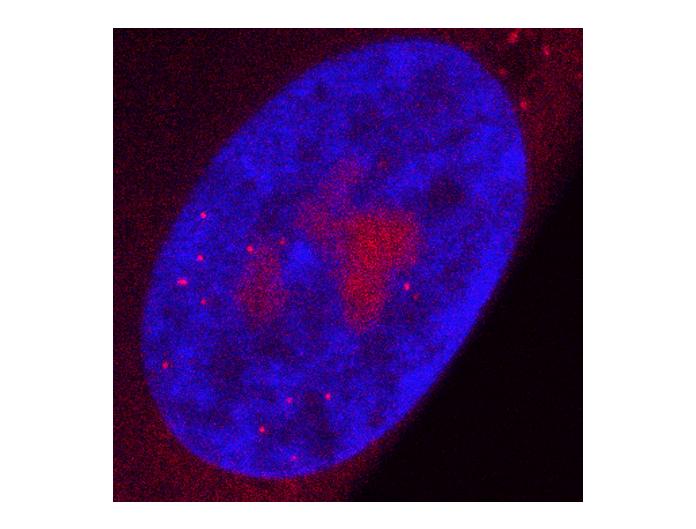Researchers at Osaka University identify vicious cycle involving RNA exosome that accelerates disease progression in FTLD/ALS

Credit: Yuya Kawabe, Kohji Mori
Osaka, Japan – Researchers at Osaka University have identified a fault in the RNA quality control system of cells that leads to the haywire production of toxic proteins in frontotemporal lobar degeneration and amyotrophic lateral sclerosis (FTLD/ALS). Their new study, published in The EMBO Journal, shows that an abnormality of the C9orf72 gene produces toxic proteins that hinder the cells’ ability to destroy defective C9orf72 RNA, which leads to the buildup of more toxic proteins. Ultimately, this creates a vicious cycle that accelerates the disease process.
The incurable neurodegenerative disorders FTLD and ALS share genetic features, including their most common genetic cause: an expansion of the repeating portion of the C9orf72 gene. Cells use DNA codes to write instructions for manufacturing new proteins in the form of RNA. In C9orf72-associated FTLD/ALS, the repeat DNA is transcribed into defective repeat RNA, which clusters in the cell and manufactures toxic proteins.
“Repeat RNA can be toxic itself and is the source of highly toxic protein. So reducing repeat RNA could be a therapeutic option in FTLD/ALS caused by this genetic abnormality,” says Kohji Mori, corresponding author of the study.
The researchers used cellular models to investigate the RNA exosome, the system responsible for destroying defective RNA. Damaging EXOSC10, a key player in the RNA exosome, increased the accumulation of repeat RNA and its toxic protein products. Cells with an accumulation of the toxic proteins showed EXOSC10 function going awry. The researchers confirmed the findings in cells derived from patients with the disorders, solidifying the RNA exosome as the site for degradation of pathogenic C9orf72-derived repeat RNA.
“The RNA exosome works to degrade the defective RNA until it becomes swamped by inhibitory effects of the toxic proteins, initiating a downward spiral that may exacerbate neurodegeneration in C9orf72-associated FTLD/ALS,” says lead author Yuya Kawabe.
Typically, a DNA code is read in one direction, but the repeat expansion in C9orf72 is bidirectionally transcribed. The researchers tested RNA transcribed from both directions, referred to as sense and antisense RNAs. Both RNAs accumulated, produced toxic protein, and were degraded by EXOSC10.
The findings provide a look into the machinery that drives disease progression at the cellular level. People with FTLD/ALS have few options–no treatments can prevent FTLD/ALS, cure it, or even slow its progression. But this new understanding of the pathological process opens up avenues to explore for therapy options.
###
The article, “The RNA exosome complex degrades expanded hexanucleotide repeat RNA in C9orf72 FTLD/ALS,” was published in The EMBO Journal at DOI: https:/
About Osaka University
Osaka University was founded in 1931 as one of the seven imperial universities of Japan and is now one of Japan’s leading comprehensive universities with a broad disciplinary spectrum. This strength is coupled with a singular drive for innovation that extends throughout the scientific process, from fundamental research to the creation of applied technology with positive economic impacts. Its commitment to innovation has been recognized in Japan and around the world, being named Japan’s most innovative university in 2015 (Reuters 2015 Top 100) and one of the most innovative institutions in the world in 2017 (Innovative Universities and the Nature Index Innovation 2017). Now, Osaka University is leveraging its role as a Designated National University Corporation selected by the Ministry of Education, Culture, Sports, Science and Technology to contribute to innovation for human welfare, sustainable development of society, and social transformation.
Website: https:/
Media Contact
Saori Obayashi
[email protected]
Original Source
https:/
Related Journal Article
http://dx.




